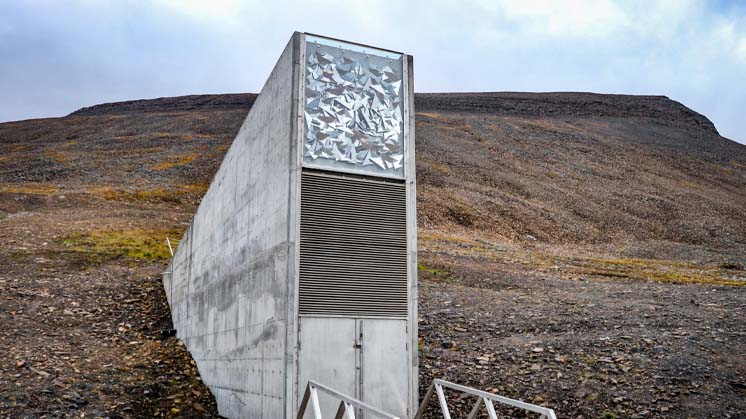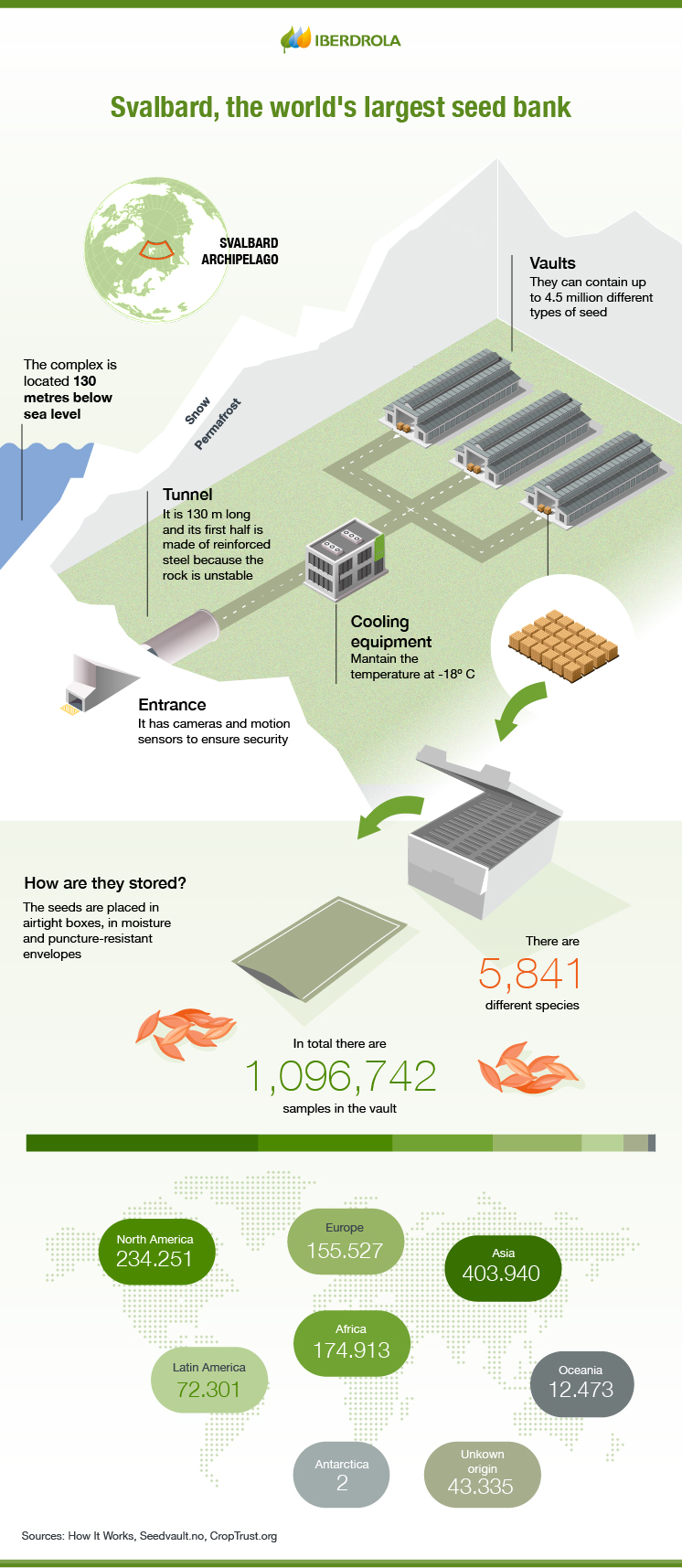Seed banks
Seed banks, what they are and their role in saving biodiversity and saving our food supply
Two out of five plants are threatened or endangered. Biodiversity is suffering and many foods may disappear from our menu in the future. One of the strategies that has become increasingly important in recent years is seed banks, which, in addition to storing seeds of different species in case worse comes to worst, are used to develop more resistant varieties. Researchers are looking for species that are better adapted to climate changes.

The Food and Agriculture Organisation of the United Nations (FAO) estimates that 75 per cent of crop diversity was lost between 1900 and 2000. Furthermore, two out of every five plants in the world are now at risk of extinction due to climate change, biodiversity loss and pharmaceutical demand, according to the World's Plants and Fungi 2020 study by the UK-based Kew Royal Botanical Gardens. Collecting, protecting and sharing a wide variety of seeds is essential to ensure our food security and that of future generations.
In response to this need, different proposals arise. One of them is reforestation with drones and intelligent seeds, as is the case of the 'Forest seeks village' proposal launched by Iberdrola through the 'Innovation and sustainability in rural areas’ challenge, in collaboration with Start-up Olé and with the support of the European Commission. Another of the big initiatives, which have gained special relevance in recent years, are the seed banks, specifically designed to preserve plant biodiversity.

What are seed banks and how do they work?
A seed bank or germplasm bank is a place where suitable conditions are maintained to conserve seed specimens of different plant species (wild or cultivated). The objective is clear: to ensure the preservation of as many plants as possible for posterity.
Seed specimens are preserved in conditions of stable humidity, constant low temperature and little or no light or darkness. "Most plants in the world produce seeds that can maintain their viability after drying and freezing," reads a document from the European Native Seed Conservation Network (ENSCONET). "After collection and proper sorting, seeds are cleaned and dehydrated to 5% moisture," the document states. They are usually stored and sealed in containers or in multi-layered foil packets, which in turn are stored in boxes and distributed on shelves within the bank. The containers are identified with labels detailing the variety, the place where the samples were collected and their characteristics. Low temperature and humidity levels ensure low metabolic activity, allowing the seeds to be kept for long periods of time.
Seed banks in the world
There are some 1,500 seed banks around the world, including the Svalbard Global Seed Vault, located on the remote Norwegian island of Spitsbergen in the Svalbard archipelago, some 1,300 kilometres north of the Arctic Circle. It is considered the world's largest germplasm centre. Also known as the 'vault at the end of the world', this dystopian-universe building was opened in 2008 in the middle of the ice and functions as a huge warehouse where more than one million seed samples from all over the world are stored.

VER INFOGRAFÍA: Svalbard: the world's largest seed bank [PDF]
The outside view of the centre reveals only the entrance: a rectangular concrete block stuck in the snow that looks more like a portal to another world out of a science fiction movie. The building, dug into the mountain, is 130 metres underground and was built to withstand earthquakes, tsunamis and other natural disasters.
The main reason for locating this large seed bank here is that the mountain on which it is located contains a thick layer of permafrost, which guarantees a stable temperature of between -3 and -4 ºC. The seed storage area has an additional cooling system to keep the temperature at a constant -18°C. In the event of a power failure, the seed bank is kept at a constant temperature. In the event of a power failure, the permafrost will preserve the stored varieties. And in case of conflict, there is an international treaty that qualifies and maintains this territory as a demilitarised zone.
Safety and foresight are paramount. However, the climate change that is causing permafrost to disappear worldwide also threatens the function of the world's largest seed bank. The scientific study Climate in Svalbard 2100, published in 2019 by the Norwegian Meteorological Institute, estimates that between 1971 and 2017 the average temperature of this archipelago has risen by almost 5°C. In the 2100 analysis horizon marked in this report, the forecast is that, if the current trend continues, Svalbard will have average temperatures up to 10 degrees above what was normal in the middle of the 20th century.
But the Svalbard bank is only one of the most important. Other reference repositories in the world are the Millennium Seed Bank, south of London in the UK, or the Australian Botanic Garden's Australian Plant Bank.
Advantages and disadvantages of seed banks
Seed banks have one major drawback: they are not a viable option for all plants in the world. In fact, a study published in 2018 in the journal Nature Plants revealed that 36% of endangered plant species cannot be stored in seed banks. There are some plants, called recalcitrant plants, that cannot withstand a certain degree of desiccation and cannot be easily conserved. Examples of this type of vegetation are chestnuts and acorns.
However, seed banks offer many advantages for the future:
 They will make it possible to conserve the diversity of plant species, especially those cultivated by humans.
They will make it possible to conserve the diversity of plant species, especially those cultivated by humans. They will help replenish needed seeds if they are lost from crops due to natural or man-made disasters, such as pollution.
They will help replenish needed seeds if they are lost from crops due to natural or man-made disasters, such as pollution. They will offer enough genetic variety to be able to develop other varieties, for example to create pest-resistant, drought-tolerant crops or to feed a growing world population.
They will offer enough genetic variety to be able to develop other varieties, for example to create pest-resistant, drought-tolerant crops or to feed a growing world population. They will protect rare and valuable species that are not usually found anywhere in nature. Seed banks will allow the genetic material to be preserved and subsequently reintroduced on a large scale into the environment.
They will protect rare and valuable species that are not usually found anywhere in nature. Seed banks will allow the genetic material to be preserved and subsequently reintroduced on a large scale into the environment. They will become insurance for the future of agriculture and our food.
They will become insurance for the future of agriculture and our food.




